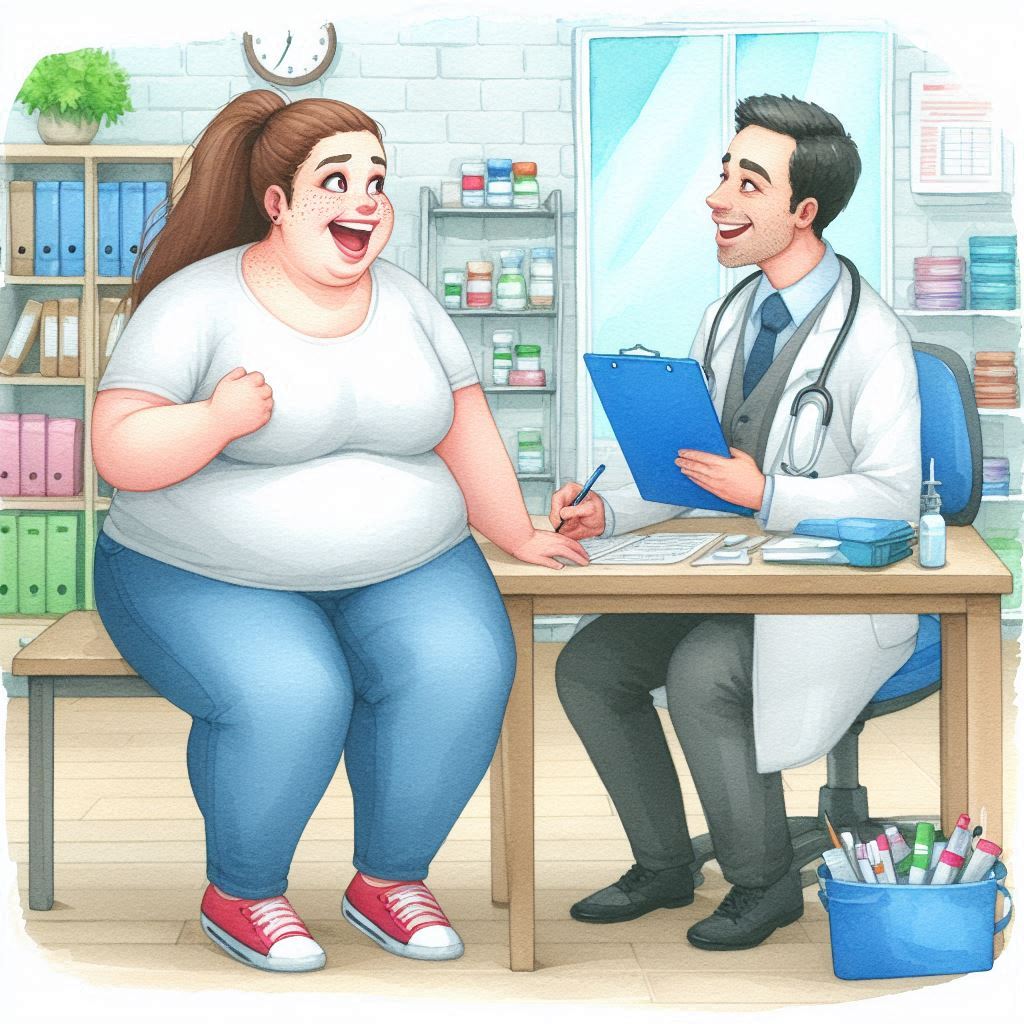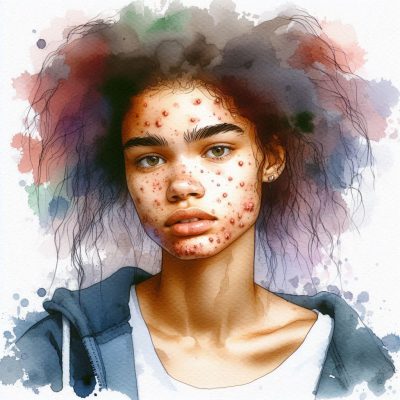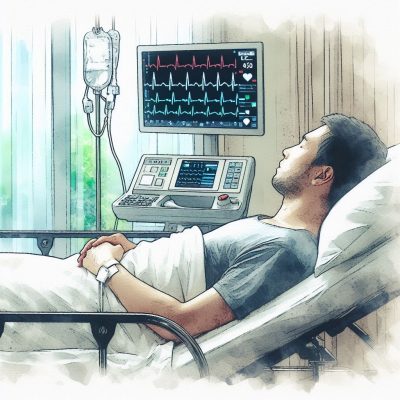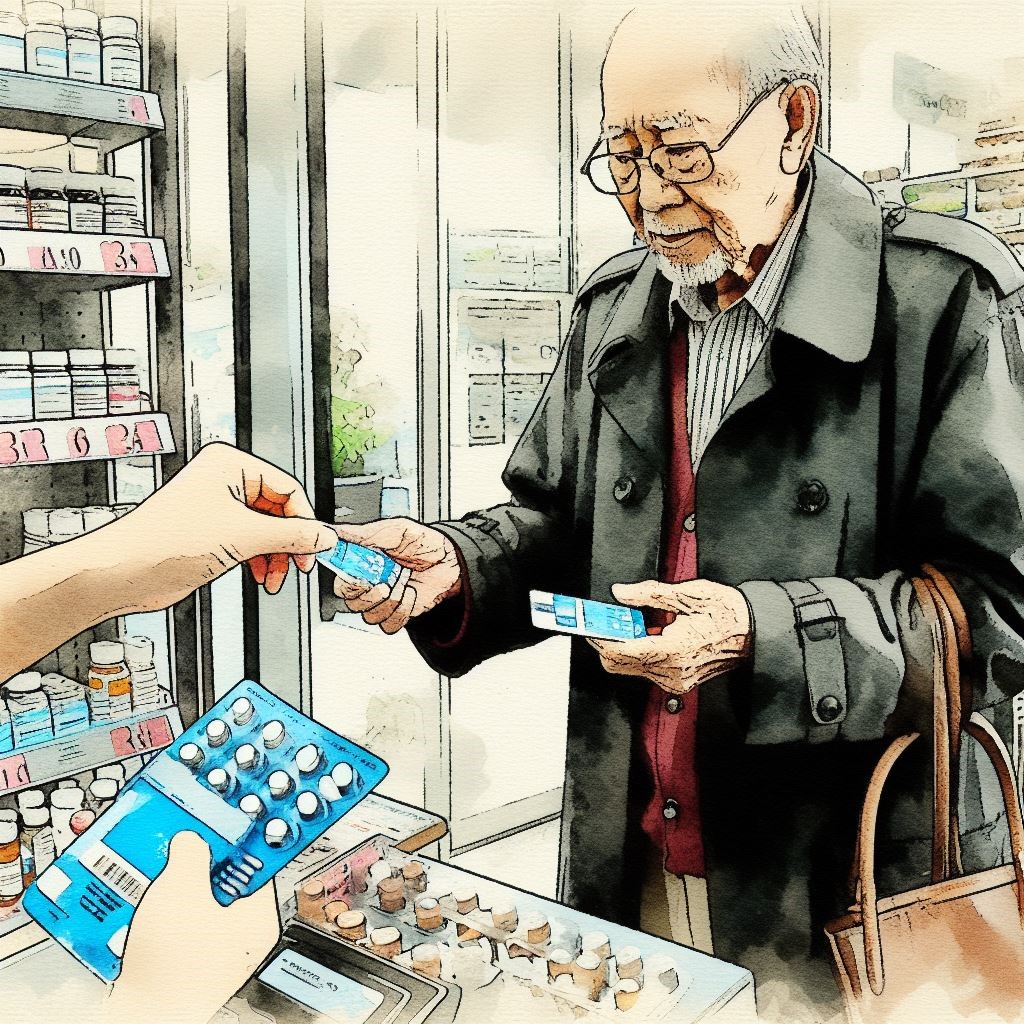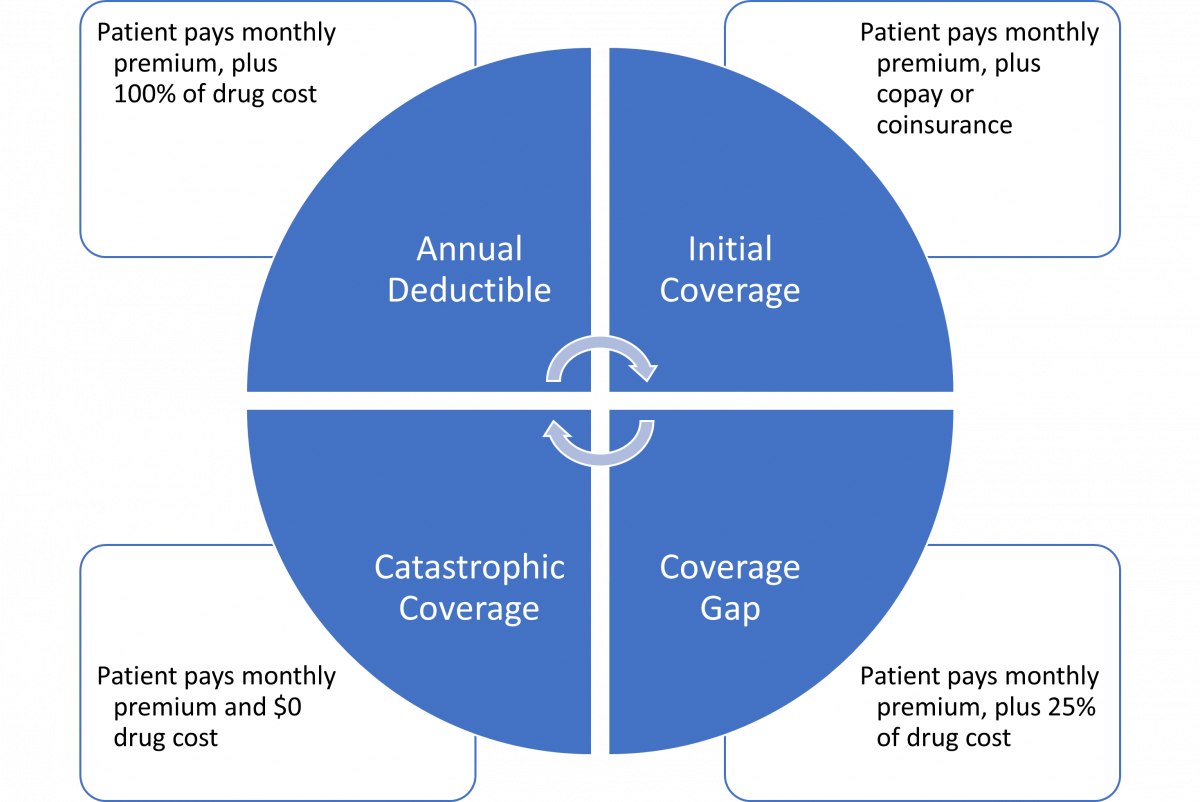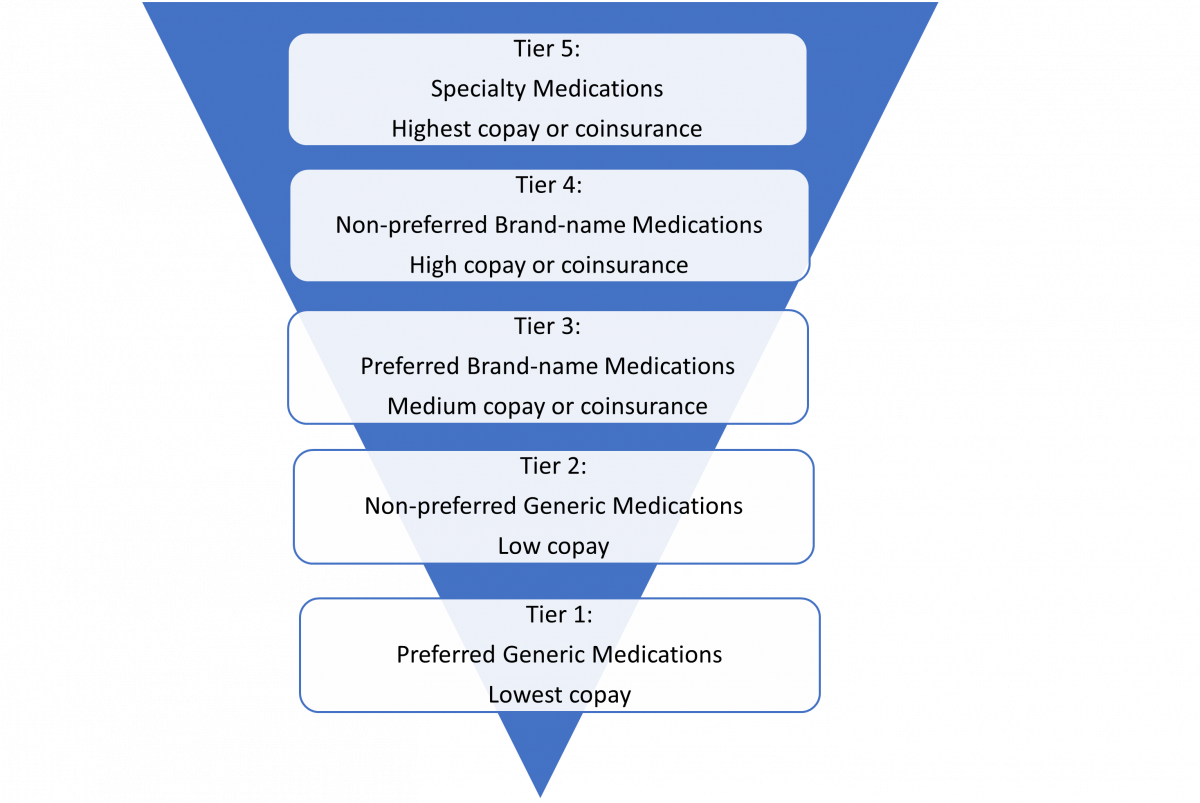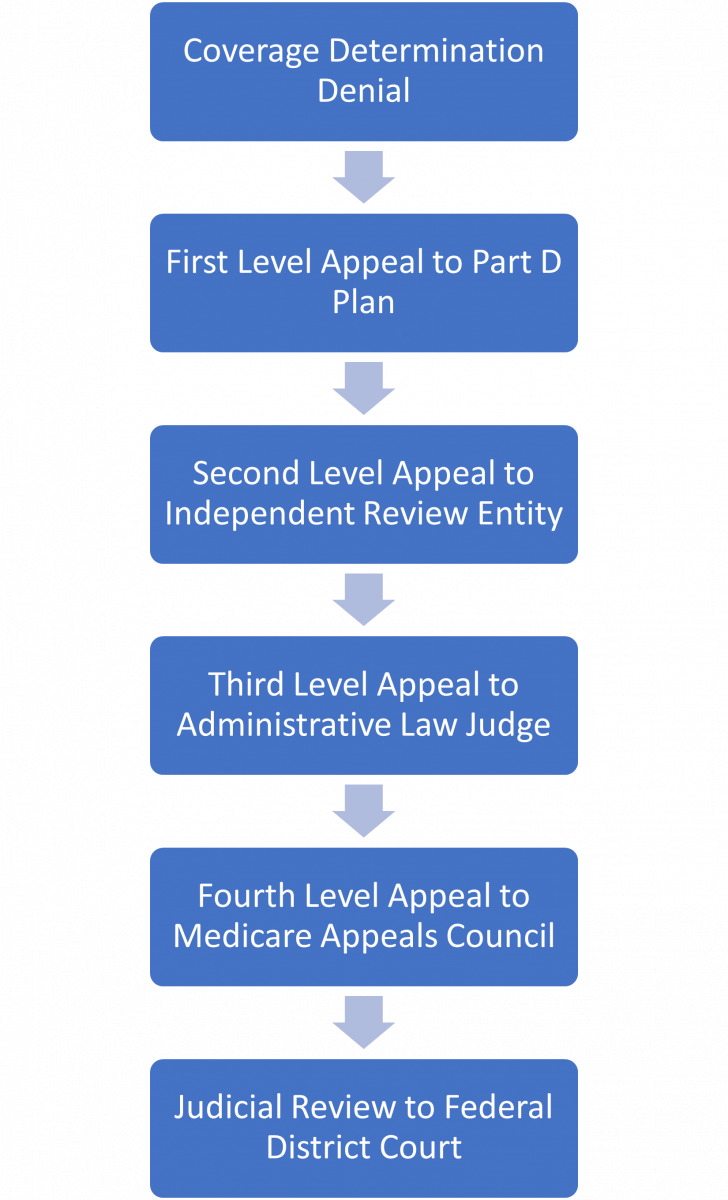INTRODUCTION
Acne vulgaris is a chronic skin condition characterized by open or closed comedones (bumps) and the development of inflammatory papules, pustules, or nodules.1 Papules are small, raised bumps; pustules are small, pus-filled bumps; and nodules are larger, solid lesions that extend into the deeper layers of the skin. Acne is among one of the most common skin disorders, frequently affecting adolescents and young adults. In the 2013 Global Burden of Disease study, acne vulgaris ranked second most burdensome skin disease among all skin diseases as measured by disability-adjusted life years.2 Experts estimate acne’s prevalence in young adults to be between 35% to more than 90%, with males affected more often than females in this age category.3 Acne’s incidence generally declines with increasing age, and tends to exhibit a female predominance following adolescence, affecting up to 15% of women.4
While acne is not associated with mortality, several complications may arise such as hyperpigmentation, scarring, and negative psychosocial effects.3 A variety of treatment options are available for acne vulgaris, both over-the-counter (OTC) and prescription; product selection depends on lesion severity and patient-specific factors. Topical therapies are for milder cases, while systemic therapies are employed in more severe cases, typically in conjunction with topical treatments.
Pathogenesis of Acne
Acne vulgaris is a complex inflammatory disorder affecting the pilosebaceous unit of the skin, which is composed of the hair follicle and sebaceous gland (glands that secrete sebum, an oily substance that keeps skin from drying out).3 Acne’s pathogenesis involves several different host factors that lead to lesion formation. The four main contributing factors associated with acne development include hyperkeratinization of follicles, increased sebum production, Cutibacterium acnes bacteria, and inflammation.3
Increased sebum secretion from sebaceous glands, often stimulated by androgens, serves as a growth medium for C. acnes bacteria. This bacterium has the propensity to activate an immune response that subsequently triggers an inflammatory response. The inflammatory response results in the formation of inflammatory papules and pustules.
Acne vulgaris may have other etiologies aside from the four main biologic factors. Cutaneous lesions can occur by way of mechanical injury or skin trauma because of scrubbing, squeezing, or friction, referred to as acne mechanica.5 Additionally, an association exists between psychologic stress and increased acne severity. Genetics is another factor that may contribute to the development of acne. Studies have shown that individuals with close family members who have acne are at increased risk of developing the condition.3
Insulin resistance is also implicated in the formation of acne as it can stimulate androgen production and lead to increased serum levels of insulin-like growth factor-1 (IGF-1). Increased IGF-1 levels are linked to increased facial sebum excretion, which ultimately facilitates acne formation. Androgens contribute significantly in the development of acne as they stimulate the growth and secretory function of sebaceous glands, further increasing sebum production.3
Several dietary elements have been associated with acne, although the evidence is not robust. A reduced glycemic index or a glycemic load diet (i.e., a low carbohydrate diet with reduced intake of processed meats, added sugar, and refined grains) may reduce the quantity and severity of acne lesions by reducing free androgens and IGF-1 levels.6 Additionally, omega-3 fatty acids can decrease IGF-1 and inhibit pro-inflammatory leukotriene B4, which potentially lessens the number of lesions. Conversely, milk and dairy products have been associated with an increase in acne lesions, likely due to their opposite effects on IGF-1 levels.3
In addition to dietary intake, the gut microbiome can impact acne development.6 A randomized, placebo-controlled double-blind study of 20 adult patients with acne showed promising results in acne improvements with probiotic supplementation over a 12-week period.7 While this preliminary data supports the use of probiotics for acne, more robust data is needed to confirm these findings.
Despite these dietary correlations, the relationship between acne and weight or body mass index (BMI) is uncertain. A large population-based study of about 600,000 adolescents in Israel found that obesity was inversely related to the development of acne.8 Conversely, a smaller scale case-control study of adolescents with moderate to severe acne found a correlation between lower BMI and lower incidence of acne.9 As studies have yielded mixed results, a connection is unclear at this time.
Pretreatment Assessment
Prior to establishing a treatment plan, thorough assessment of the types of acne lesions and severity of those lesions is essential. Additionally, clinicians should consider potential contributing factors such as comedogenic skincare products (i.e., products that have a high likelihood of clogging pores), medications, or endocrine disorders. They should also consider the presence of complications such as scarring, hyperpigmentation, or presence and extent of psychologic distress when establishing treatment regimens and setting treatment goals.10 Anatomic location of the lesions is important to note as well.1
Acne vulgaris lesions are either comedonal or papulopustular3:
- Comedonal lesions are milder in severity and characterized by closed comedones, also known as “whiteheads,” or open comedones, also known as “blackheads.” Comedonal lesions are non-inflammatory and typically smaller than 5 mm in size, or smaller than the size of a pencil top eraser.
- Papulopustular acne has a more inflamed presentation with relatively superficial papules or pustules, although still typically smaller than 5 mm in size.
- Nodular acne is a more severe variation of papulopustular acne with deep-seated, inflamed and often tender, large papules or nodules.
While no universally accepted method of assessing acne grade or severity exists, several characteristics may differentiate between mild acne and more severe variants. Mild acne typically has limited skin involvement with scattered, small (less than 5 mm in size) comedonal lesions or inflamed papules. Mild acne also has an absence of near confluent skin involvement (defined as lesions that flow together) and no scarring or large nodules. Many visually prominent comedonal or inflammatory papulopustular lesions are characteristic of moderate to severe acne. Other features indicative of moderate to severe acne include the presence of large nodules, scarring, and involvement of multiple body areas.10
PAUSE AND PONDER: Since several treatments for acne are available over-the-counter (OTC), what is a reasonable regimen for mild acne using only OTC drugs?
Treatment for Mild Acne
The American Academy of Dermatology published guidelines for the management of acne vulgaris in 2016, and on January 30, 2024, the academy published an update to these guidelines in the form of a systematic review.1,11 The updated guidelines offer evidence-based recommendations and several good practice statements for the management of acne vulgaris. The guidelines classify recommendations as strong, where the benefits clearly outweigh the risks, or conditional, where the benefits are closely balanced with risks and burden. Conditional recommendations apply to most patients, but the most appropriate action may differ depending on patient or other stakeholder values.11
Topical medications—as monotherapy or in combination—are typically the initial treatment of choice for mild acne.11 For mild comedonal acne without inflammatory lesions, treatment with a topical retinoid is an appropriate choice.1 Mild papulopustular and mixed acne may benefit from either a combination of a topical retinoid and topical antimicrobial or benzoyl peroxide and a topical antibiotic. Combining topical antibiotic treatment with benzoyl peroxide decreases the development of antibiotic resistance to C. acnes and improves treatment outcomes.10 The 2024 guidelines strongly recommend the following topical therapies for patients with acne based on moderate evidence: benzoyl peroxide, topical retinoids, and topical antibiotics (although not as monotherapy).11
Topical Retinoids
Topical retinoids are routinely the initial treatment choice for mild comedonal acne. As vitamin A (retinol) derivatives, retinoids are important regulators of cell reproduction, proliferation (self-multiplication), and differentiation (specialization into specific cell types).12 In comedonal acne, retinoids normalize follicular hyperkeratosis (excessive development of keratin in hair follicles which result in papules) and prevent formation of the microcomedo, the primary lesion of acne.10 Table 1 lists the four currently available topical retinoid therapies for acne vulgaris: adapalene, tazarotene, tretinoin, and trifarotene.
Table 1. Topical Retinoids for Acne Vulgaris10,13
| Medication |
Usual Dosage |
Available Dosage Forms |
Common Adverse Effects |
| Adapalene |
Apply to acne lesions once daily in the evening or before bedtime |
Cream: 0.1%
Gel: 0.1% (OTC), 0.3%
Lotion: 0.1% |
Local skin irritation: erythema (redness), skin scaling, xerosis (dryness), burning, and pruritus (itching); photosensitivity (light sensitivity) |
| Tazarotene |
Cream: 0.05%, 0.1%
Gel: 0.05%, 0.1%
Foam: 0.1%
Lotion: 0.045% |
Local skin irritation: burning and stinging, contact dermatitis, erythema, pruritus, skin discoloration, skin inflammation, application site pain, and xerosis; photosensitivity |
| Tretinoin |
Cream: 0.025% to 0.1%
Gel: 0.01% to 0.05%
Lotion: 0.05%
Microsphere gel: 0.04% to 0.1% |
Local skin irritation: peeling, xerosis, burning, stinging, erythema, and pruritus; photosensitivity |
| Trifarotene |
Cream: 0.005% |
Application site pruritus, skin irritation, and photosensitivity |
OTC, over the counter.
Tretinoin, when used topically, reduces the likelihood of follicular epithelial cells from sticking together, and decreases microcomedone formation. Additionally, it can increase turnover of follicular epithelial cells and stimulates mitotic activity or cell division thereby causing expulsion of comedones.14 Tretinoin is available in various dosage forms including creams, gels, and lotions. Newer formulations of tretinoin such as microsphere gels release the medication more slowly and are generally less irritating.10
Patients should apply tretinoin to the affected area once daily at bedtime, 20 minutes following washing and drying of the face. Newer formulations are more stable, allowing patients to use them immediately following cleansing.14 Adverse effects of topical tretinoin, listed in Table 1, are typically most pronounced in the first month of therapy. Pharmacy teams should instruct patients to apply sunscreen in the morning to minimize photosensitivity (sensitivity to light), and guidelines recommend using sunscreen throughout the course of treatment with topical retinoids.1
Adapalene is a retinoid-like drug that functions as a modulator of cell differentiation, keratinization (i.e., when the epithelial cells develop a hardened horn-like character), and inflammatory processes.15 Adapalene is available as a cream, gel, and lotion applied topically at bedtime after cleansing. It is the only retinoid available without a prescription. Adapalene has demonstrated similar efficacy and superior tolerability compared to other retinoids.16
Tazarotene is a retinoid prodrug (i.e., inactive compound that turns into an active drug once metabolized) that reduces the number of inflammatory and non-inflammatory lesions in acne vulgaris.17 Patients apply tazarotene (a cream, gel, foam, or lotion) to the affected area once daily at bedtime after cleansing. The adverse effect profile is similar to that of other retinoids. While topical retinoid therapy is generally not recommended in pregnancy, this topical acne medication is contraindicated in pregnancy.
Trifarotene is a retinoic acid receptor (RAR) agonist with specific activity at the gamma subtype of RAR. RAR activation causes transcription of several genes that are responsible for cell differentiation and mediation of inflammation.18 It is the first topical retinoid specifically studied in both facial and truncal acne, yielding favorable safety, tolerability, and efficacy data in patients with moderate acne.19 Trifarotene is available as a cream applied once daily in the evening or before bedtime.
Benzoyl Peroxide
Benzoyl peroxide is a topical oxidizing drug which kills the bacteria on the skin, halts the production of sebum, and breaks down the outermost layer of the skin. It has potential to improve both inflammatory and non-inflammatory acne lesions.20 Benzoyl peroxide is available in a variety of dosage forms including creams, gels, washes, and foams and in several concentrations ranging from 2.5% to 10%, most of which are available OTC. Concentration-dependent irritation, staining, and bleaching of fabric and hair is a limiting factor in treatment with benzoyl peroxide. Pharmacists and technicians should inform patients that staining of towels and pillowcases is common when using this medication.
Irritation from benzoyl peroxide manifests as erythema, scaling, xerosis, or stinging, tightening, or burning sensations.10 Generally, lower concentrations (i.e., 2.5% to 5%), water-based, and wash-off products have better tolerability, particularly in patients with sensitive skin.1 Presently, C. acnes shows no resistance to benzoyl peroxide, so addition of this medication to other regimens may further minimize development of antibiotic resistance.
Benzoyl peroxide is optimal for mild papulopustular acne with or without comedonal lesions. Patients may use benzoyl peroxide in conjunction with a retinoid or topical antibiotic, and several combination products are available by prescription only (described in Table 2). If using benzoyl peroxide in combination with tretinoin, patients should apply the medications at different times of the day to avoid oxidation or degradation of the tretinoin product (i.e., use benzoyl peroxide in the morning and tretinoin in the evening). Benzoyl peroxide application timing does not matter when co-administered with the tretinoin microsphere formulation or other retinoids.1 The guidelines recommend using benzoyl peroxide one to three times daily, however, an increase in adverse effects such as dryness can occur with increased frequency of use. Usually, visible improvement occurs after about three weeks of benzoyl peroxide use, and maximal improvement is apparent after eight to 12 weeks.10
Table 2. Topical Combination Medications for Acne Vulgaris 10,13
| Category |
Medication |
Usual Dosage |
| Benzoyl Peroxide and Topical Antibiotic |
Benzoyl peroxide 5% / clindamycin 1% gel |
Apply twice daily |
| Benzoyl peroxide 5% / clindamycin 1.2% gel |
Apply once daily in the evening |
| Benzoyl peroxide 2.5% / clindamycin 1.2% gel |
Apply once daily in the evening |
| Benzoyl peroxide 3.75% / clindamycin 1.2% gel |
Apply once daily in the evening |
| Benzoyl peroxide 5% / erythromycin 3% gel |
Apply twice daily |
| Antimicrobial and Retinoid |
Clindamycin 1.2% / tretinoin 0.025% gel |
Apply once daily in the evening |
| Benzoyl peroxide 2.5% / adapalene 0.1% gel |
Apply once daily in the evening |
| Benzoyl peroxide 2.5% / adapalene 0.3% gel |
Apply once daily in the evening |
| Benzoyl peroxide 3% / tretinoin 0.1% cream |
Apply once daily in the evening |
| Antimicrobial, Antibiotic and Retinoid |
Benzoyl peroxide 3.1% / clindamycin 1.2% / adapalene 0.15% gel |
Apply once daily |
Topical Clindamycin
Clindamycin is an antibiotic used topically for acne vulgaris, most often in combination with benzoyl peroxide. The guidelines discourage monotherapy with topical antibiotics due to concerns for antibiotic resistance.11 Clindamycin is available in numerous topical dosage forms including gels, solutions, lotions, foam, and pledgets (small cotton rounds with medication embedded) and comes co-formulated with several retinoid medications.
A meta-analysis comparing different topical treatments for acne demonstrated that gels containing benzoyl peroxide and clindamycin in combination were modestly more effective than benzoyl peroxide alone for the treatment of inflammatory acne lesions, superior to clindamycin alone, and resulted in faster improvement.21 Clindamycin is generally well tolerated when used topically, but irritation may occur as with any topical acne medication. Patients apply clindamycin to the affected area twice daily. Topical erythromycin is an alternative to clindamycin; however, reduced efficacy due to antibiotic resistance has limited its use.1
Salicylic Acid and Azelaic Acid
Several alternative topical medications are available for patients with acne who are unable to tolerate retinoid therapy. Topical salicylic acid is a comedolytic medication (product which resolves papules and prevents formation of new ones) with mild anti-inflammatory properties that works by causing desquamation (shedding) of the horny layer of skin.22 It is available OTC in a variety of different gels, washes, pads, masks, lotions, and solutions. The guidelines conditionally recommend salicylic acid for patients with acne based on low certainty of evidence.11 Salicylic acid is typically dosed once daily, however patients may increase to two or three times daily if needed, as tolerated. Skin dryness and peeling may occur from using this medication, especially when used in excess.23 For patients seeking an OTC resolution for acne, pharmacists can suggest salicylic acid in combination with benzoyl peroxide.
Azelaic acid is an effective treatment for acne due to its antimicrobial and antikeratinizing effects on the follicular epidermis and carries a conditional recommendation based on the guidelines.24,11 Azelaic acid possesses mild anti-inflammatory properties and can improve acne-induced, post-inflammatory hyperpigmentation.10 Patients apply this medication to the affected area twice daily, and it comes formulated as a cream, gel, and foam. Studies have shown that azelaic acid’s efficacy is comparable to other topical acne treatments, and it is generally well tolerated. Azelaic acid’s most common adverse effect, as with other topical acne medications, is local skin irritation.25,26
Alternative Therapies for Resistant Disease
In patients who report insufficient improvement with first line treatments, providers may consider several additional topical options before starting systemic therapy. For comedonal acne, providers may try an alternative concentration of the retinoid therapy if there is room to increase, or switch to another retinoid drug if the current medication is already maximally dosed. For papulopustular acne, providers may change the retinoid medication or add concomitant benzoyl peroxide and/or a topical antibiotic, if desired. Alternative approaches to managing papulopustular acne involve the addition of topical dapsone, clascoterone, or topical minocycline.10 Table 3 lists antimicrobial therapies and additional alternative topical medications available for the treatment of acne vulgaris.
Table 3. Antimicrobial Therapies and Alternative Topical Medications used for Acne Vulgaris 10,13
| Category |
Medication |
Usual Dosage |
Available Dosage Forms |
Common Adverse Effects |
| Antimicrobial |
Benzoyl Peroxide |
Apply one to three times daily |
2.5 to 10% gels, lotions, creams, pads, masks, cleansers, foam (most are OTC) |
Local skin irritation |
| Clindamycin |
Apply twice daily |
1% gel, lotion, pledget, solution, foam |
Generally well tolerated, skin irritation may occur |
| Dapsone |
Apply once daily |
Gel: 5%, 7,5% |
Application site dryness and pruritus |
| Erythromycin |
Apply twice daily |
2% gel, solution, pledget |
Generally well tolerated, skin irritation may occur |
| Minocycline |
Apply once daily 1 hour prior to bed |
Foam: 4% |
Headache |
| Topical Androgen Receptor Inhibitor |
Clascoterone |
Apply twice daily |
Cream: 1% |
Scaling, dryness, edema, or irritation of skin; HPA axis suppression |
| Other |
Azelaic acid |
Apply twice daily |
Cream: 20% |
Local skin irritation |
| Gel: 15% |
| Foam: 15% |
| Salicylic acid |
Apply one to three times daily |
0.5 to 2% creams, gels, pads, cleansers, solutions, soaps, pledget, foam (most are OTC) |
Local skin irritation including transient stinging, burning, or pruritus; potential for salicylate absorption |
HPA, hypothalamic-pituitary-adrenal; OTC, over the counter.
PAUSE AND PONDER: What factors could contribute to the higher prevalence of acne in males during adolescence?
Topical dapsone is an antimicrobial agent that shows modest to moderate efficacy, particularly in the reduction of inflammatory acne lesions in clinical trials.27,28 While dapsone’s mechanism of action is poorly understood, it is thought to possess both anti-inflammatory and antimicrobial properties. Additionally, dapsone has demonstrated superior efficacy in females as opposed to males.29 Dapsone may be used in combination with benzoyl peroxide, however due to the potential for oxidation, patients must apply the medications at different times. Temporary yellow or orange discoloration of the skin and hair may occur if patients apply dapsone and benzoyl peroxide simultaneously. Patients apply dapsone to the affected area once daily and generally tolerate it well. Unlike with oral dapsone therapy, testing for glucose-6-phosphate dehydrogenase is unnecessary.1
Clascoterone is a first-in-class topical androgen receptor inhibitor indicated for the treatment of acne vulgaris in individuals aged 12 years and older.30 This medication competes with dihydrotestosterone (DHT) for androgen receptors to block DHT from binding to these receptors. This in turn reduces the transcription of androgen-responsive genes that modulate inflammation and sebum production.30 Two phase 3 randomized clinical trials demonstrated that clascoterone has a similar safety profile to placebo without any downstream systemic androgenic effects.31 Patients apply clascoterone to the affected area twice daily. Clascoterone’s most common adverse effects include scaling, dryness, edema, or irritation of skin. Another, more serious potential adverse effect is hypothalamic-pituitary-adrenal axis suppression (i.e., inadequate cortisol production leading to impaired stress response).10 Currently, clascoterone carries a conditional recommendation for the treatment of acne; this is based on a high certainty of evidence, however, also considers cost and access to treatment.11
Treatment for Moderate to Severe Acne
Patients with moderate to severe acne may benefit from topical therapy, but this disease severity often necessitates the addition of systemic medications to achieve optimal outcomes. The guidelines recommend several different oral medications for acne vulgaris including antibiotics, isotretinoin, and hormonal medications, listed in Table 4.1 Prescribers usually employ systemic therapy in combination with topical medications, but they use oral isotretinoin as monotherapy. Drug selection is based on lesion severity and consideration of patient-specific factors.
Table 4. Systemic Therapies for Acne Vulgaris10,13
| Category |
Medication |
Usual Dosage |
Common Adverse Effects |
| Tetracycline Antibiotics |
Doxycycline |
Immediate Release: 50 to 100 mg twice daily or 100 mg once daily
Delayed Release: 100 mg every 12 hours for 1 day, then 100 mg once daily
Sub-antimicrobial dosing:
Immediate Release: 20 mg twice daily
Delayed Release: 40 mg once daily |
Photosensitivity, GI distress, pseudotumor cerebri; contraindicated in pregnancy and children < 8 years of age |
| Minocycline |
Immediate Release: 50 or 100 mg daily or twice daily
Extended Release: 1 mg/kg/day (round to nearest available strength) |
Dizziness, vertigo, serum sickness, drug-induced lupus, skin discoloration, pseudotumor cerebri; contraindicated in pregnancy and children <8 years of age |
| Sarecycline |
33 to 54 kg: 60 mg once daily
55 to 84 kg: 100 mg once daily
85 to 136 kg: 150 mg once daily |
Photosensitivity, GI distress; contraindicated in pregnancy and children <8 years of age |
| Macrolide Antibiotics |
Azithromycin |
Pulse dosing due to long drug half-life; 500 mg 1–3 times per week or 4 times monthly was studied, optimal regimen unknown |
GI distress |
| Erythromycin |
250 to 500 mg twice daily initially, then decrease to once daily |
| Aldosterone Receptor Antagonists |
Spironolactone |
50 to 100 mg/day in 1 or 2 equally divided doses |
Menstrual irregularity, breast tenderness, minor GI symptoms, orthostatic hypotension, hyperkalemia, dizziness, headaches, fatigue; contraindicated in pregnancy |
| Oral Retinoids |
Isotretinoin |
0.5 mg/kg/day, increasing to 1 mg/kg/day in 1 or 2 equally divided doses; total dose 120 to 150 mg/kg over 20 weeks |
Dry skin and mucous membranes, visual changes, myalgia, hypertriglyceridemia, elevation of hepatic enzymes; teratogenic (absolutely contraindicated in pregnancy) |
| Combination Oral Contraceptives |
Various estrogen/progestin combinations |
One tablet once daily |
Nausea, breast tenderness, weight gain, thromboembolic events |
|
|
|
GI, gastrointestinal.
Oral Antibiotics
Systemic antibiotics are indicated for moderate to severe inflammatory acne.1 Antibiotics reduce inflammation by inhibiting the growth of C. acnes bacteria, with some antibiotics also exhibiting direct anti-inflammatory properties. When initiating oral antibiotic therapy for acne, prescribers should limit the duration of treatment to the shortest necessary interval to minimize antibiotic resistance; continuous therapy for three or four months is typically sufficient.32 The guidelines recommend simultaneous use of a topical retinoid with the oral antibiotic. Addition of topical benzoyl peroxide will further limit occurrence of antibiotic resistance.32
Tetracycline antibiotics are first-line medications for the treatment of acne vulgaris.1 While other antibiotics may be used when treatment fails or is not tolerated, treatment with non-antibiotic systemic medications (e.g., isotretinoin) is typically considered first.32 Tetracycline antibiotics inhibit protein synthesis by binding the 30S subunit of the bacterial ribosome, and they also possess anti-inflammatory properties.1 Children younger than eight years old and patients who are pregnant cannot use tetracyclines due to the potential for discoloration of developing permanent teeth. Doxycycline, minocycline, and sarecycline are the main tetracyclines used for acne in the United States (U.S.). Providers no longer use tetracycline itself for acne due to tolerability issues, antibiotic resistance, and limited availability.
The guidelines strongly recommend doxycycline for acne vulgaris based on moderate evidence.11 The typical recommended dose of doxycycline for acne is 100 mg twice daily. Patients take delayed release tablets once daily after the initial loading dose.33 Several studies have also shown that sub-antimicrobial dosing of doxycycline—either 20 mg twice daily or 40 mg once daily of the delayed-release formulation—is an effective strategy for acne vulgaris management.34-36 This dosing strategy eliminates the drug’s antibacterial action while maintaining its anti-inflammatory effects. Data shows that once daily 40 mg delayed-release doxycycline reduced inflammatory lesions and was better tolerated than doxycycline 100 mg once daily.34 Doxycycline’s most common adverse effects are gastrointestinal complaints, which patients can mitigate by taking the medication with food. Photosensitivity and benign increased intracranial pressure (pseudotumor cerebri) have also been associated with the use of tetracyclines, including doxycycline.33
Minocycline is a tetracycline antibiotic that the guidelines conditionally recommended for the treatment of acne vulgaris based on moderate evidence.11 Although minocycline is effective, it has been associated with greater toxicity than doxycycline, so it is not usually used first.37 Typical minocycline dosing is 50 mg to 100 mg twice daily, or 1 mg/kg/day of the extended-release formulation. Minocycline may produce vestibular adverse effects such as headache, dizziness and vertigo, serum sickness, and pseudotumor cerebri. According to a systematic review, minocycline is the only tetracycline associated with the development of lupus erythematosus, although the risk is small.37 Photosensitivity may also occur with minocycline but typically to a lesser extent than with doxycycline.32
Sarecycline is a newer, narrow-spectrum tetracycline antibiotic indicated for inflammatory lesions of non-nodular moderate to severe acne vulgaris in patients 9 years of age and older.38 The guidelines conditionally recommended this medication based on high certainty evidence.11 A narrow-spectrum antibiotic targets specific types of bacteria, while a broad-spectrum antibiotic is effective against a wide range of bacteria. Using this narrow-spectrum drug reduces the potential for antibiotic resistance and gut microbiome disruption.32 Sarecycline dosing is weight-based ranging from 60 mg to 150 mg once daily.38 Importantly, studies have not established sarecycline’s efficacy beyond 12 weeks or safety beyond 12 months. Sarecycline’s most common adverse effect in clinical trials was nausea.38
Alternative antibiotics for acne vulgaris are reserved for patients who cannot tolerate or don’t respond well to tetracyclines and are not candidates for other systemic therapies.32 Clinical trials have evaluated macrolides—including erythromycin and azithromycin—for acne. A meta-analysis comparing the efficacy of azithromycin to doxycycline demonstrated that azithromycin pulse therapy (i.e., 500 mg one to three times per week or four times monthly) is equivalent to doxycycline 100 mg once or twice daily at 12 weeks in moderate to severe acne vulgaris.39 While some data supports their efficacy, macrolides are rarely used for this indication due to concerns for antibiotic resistance.40 Additionally, erythromycin is very poorly tolerated due to significant gastrointestinal adverse effects.
Other antibiotic regimens that may be effective for acne in adults are trimethoprim-sulfamethoxazole 160 mg/800 mg once to twice daily and cephalexin 500 mg twice daily, but data supporting their use is limited.41 The guidelines discourage using these antibiotics for acne due to increased risk of antibiotic resistance.1
Topical Antibioitcs
Providers may consider topical minocycline as an alternative topical antibiotic for acne vulgaris in moderate to severe cases. Topical minocycline comes as a 4% foam and is indicated for the treatment of inflammatory lesions of non-nodular moderate to severe acne vulgaris in patients 9 years of age and older.42 Three large clinical trials have shown topical minocycline foam consistently reduces inflammatory acne lesions.43,44 Patients apply the medication to the affected area at the same time each day at least one hour before bedtime. Pharmacists should inform patients that minocycline foam is well tolerated, with headache being the most notable adverse effect.42
Isotretinoin
Isotretinoin is an oral retinoid that tackles all four major factors in acne pathogenesis: sebum production, follicular hyperkeratinization, inflammation, and C. acnes bacteria. Isotretinoin is U.S. Food and Drug Administration (FDA) approved for the treatment of severe recalcitrant (refractory) nodular acne vulgaris.32 This medication is also a good option for moderate acne resistant to other treatments or for the management of acne that has produced physical scarring or psychosocial distress.1 Oral isotretinoin is the only medication that can permanently alter the natural course of acne vulgaris, and has the potential to induce long-term remission.32 Most patients experience long-term improvement in acne severity after just one course of isotretinoin. Additionally, continued improvement may occur for several months following completion of the treatment course, so patients must wait at least five months before considering additional isotretinoin therapy.45
Patients take isotretinoin as monotherapy over the course of several weeks. Dosing is weight-based starting at 0.5 mg/kg/day in two divided doses, then titrated up to 1 mg/kg/day after the first month. The typical treatment duration is 15 to 20 weeks or until the total nodule count decreases by more than 70%, whichever occurs first.46 Taking the medication with food improves absorption (an important counseling point). Isotretinoin is contraindicated in pregnancy due to its teratogenicity (causes birth defects), but it is unclear whether teratogenic effects occur in sperm from males using isotretinoin.47 All patients who are prescribed the medication, prescribing providers, and pharmacies who dispense isotretinoin must enroll in the iPLEDGE REMS to receive the medication. Pharmacy teams play an integral part in ensuring patients can safely obtain this medication. They must verify that both the patient and provider are enrolled, obtain a Risk Management Authorization (RMA) number prior to filling and dispensing each prescription, and that no more than a 30-day supply is dispensed. Additionally, upon authorization, the iPLEDGE REMS website provides a “do not dispense to patient after” date. It is calculated as 30 days after the office visit for patients who cannot get pregnant, and seven days from the documented negative pregnancy test for patients who can.
Isotretinoin is associated with several potential adverse effects including dry skin and mucous membranes, visual changes, and myalgia. Additionally, patients, particularly those with severe disease, may see an initial transient worsening of acne that requires adjustment to therapy.45 Isotretinoin is known to cause hyperlipidemia and elevation of hepatic transaminases (liver enzymes) necessitating lab monitoring.32 Some research suggests a possible link between depression and suicidal ideation, but the data is inadequate to establish causality at this time.48,49 Researchers have also suggested a link between isotretinoin and inflammatory bowel disease, but several large cohort studies have not confirmed this.50-52
PAUSE AND PONDER: What would be the best course of action for a pregnant patient with acne?
Oral Hormonal Therapies
Combination oral contraceptives (COC) and/or spironolactone may be reasonable therapeutic options for patients with acne vulgaris assigned female sex at birth. Both therapies carry a conditional recommendation for use in acne based on moderate evidence.11 These hormonal therapies work by reducing the androgenic effects on sebaceous glands, reducing sebum production. This can ultimately diminish comedone development and minimize C. acnes bacteria growth.32
COCs containing an estrogen and progestin are effective therapies for acne vulgaris in female patients. Although most progestins in oral contraceptives have androgenic properties, all low-dose COCs are estrogen dominant and produce an overall antiandrogenic effect.32 The four COCs with an FDA approval for the treatment of acne vulgaris are
- drospirenone 3 mg/ethinyl estradiol 0.02 mg
- drospirenone 3 mg/ethinyl estradiol 0.02 mg/levomefolate calcium 0.451 mg
- norethindrone acetate/ethinyl estradiol/ferrous fumarate (triphasic formulation, meaning dose differs by the week)
- norgestimate/ethinyl estradiol (triphasic formulation)
These are all approved for patients with acne vulgaris who also desire contraception.13
COCs for acne are not for use in patients who are younger than 14 years of age or within the first two years of starting menses unless it is clinically warranted.1 Other contraindications to COCs exist, including smokers aged 35 and older and patients with select cardiovascular and gastrointestinal comorbidities.11 COCs may be used in combination with other oral acne medications, including the tetracyclines and spironolactone.1 All COCs are associated with cardiovascular risks including thromboembolism and myocardial infarction, specifically in smokers. Additionally, they carry a potential risk of breast cancer and cervical cancer.13 Providers do not use progestin-only contraceptives for acne vulgaris as their androgenic properties may exacerbate acne.32
Spironolactone is an aldosterone receptor antagonist with potent antiandrogen activity. It decreases testosterone production and competitively inhibits binding of testosterone and DHT to androgen receptors. Spironolactone may also inhibit 5-alpha-reductase (the enzyme that converts testosterone to DHT) and increase steroid hormone binding globulin (a protein that binds to estrogens and androgens).1 While spironolactone is not FDA approved for acne, clinicians often use it off-label based on available evidence and expert opinion.53-55 When used for acne, spironolactone is dosed at 50 mg to 100 mg in one or two equally divided doses. Patients generally tolerate it well, and the most common adverse effects include diuresis (increased urination), menstrual irregularities, breast tenderness, breast enlargement, fatigue, headache, and dizziness.1 It is also important to note that spironolactone is a potassium-sparing diuretic and hyperkalemia (high potassium levels) may occur when given at high doses or in patients with comorbidities such as renal insufficiency or severe heart failure. Hyperkalemia can be serious, but young, healthy patients taking spironolactone for acne do not appear to be at significant risk for hyperkalemia and don’t require monitoring.11,32
Rare, Severe Acne Variants
Acne Fulminans
Acne fulminans is a rare form of acne vulgaris characterized by the sudden development of large, inflammatory nodules and friable (fragile) plaques with erosions, ulcers, and hemorrhagic crusts. This may occur with or without systemic symptoms such as fever, malaise, bone pain, and arthralgias.3 These lesions typically present on the trunk; however, they may occur elsewhere. Isotretinoin can trigger acne fulminans, but some cases are idiopathic (no known cause). Acne fulminans typically occurs in adolescent males with preexisting acne vulgaris.3
Treatment for acne fulminans involves using oral corticosteroids, usually prednisone 0.5 mg to 1 mg/kg/day, in combination with isotretinoin. If isotretinoin precipitated acne fulminans, prescribers must stop this medication and proceed with corticosteroid monotherapy for four weeks in patients with systemic symptoms and for two weeks for patients without systemic symptoms. When acne fulminans resolves, patients may restart isotretinoin in conjunction with the oral corticosteroid for at least four weeks before gradually titrating isotretinoin up as tolerated and reducing the corticosteroid dose. Providers may consider combination therapy with oral corticosteroids and tetracyclines for acne fulminans, but it is less effective.32
Acne Conglobata
Acne conglobata is a severe form of nodular acne that primarily affects males. Large draining lesions, sinus tracts (linear, burrowing lesions resulting when multiple nodules merge), and severe scarring are characteristic of acne conglobata. Unlike acne fulminans, acne conglobata is not associated with systemic symptoms.3 The recommended treatment is oral isotretinoin, but isotretinoin may also occasionally cause severe flares at the start of therapy. Similar to the treatment for acne fulminans, low initial doses of isotretinoin (0.5 mg/kg per day or less) with oral corticosteroids before or during isotretinoin therapy are usually required.32 Intralesional glucocorticoid injections with triamcinolone acetonide have demonstrated efficacy as an adjunct treatment for severe nodular acne lesions.1,11 Additionally, tetracycline antibiotics have been used for severe nodular acne and may play a role in the treatment of acne conglobata, but they cannot be combined with isotretinoin due to the increased risk of pseudotumor cerebri.56 Case reports supporting the use of tumor necrosis factor-alpha inhibitors (i.e., etanercept, adalimumab, and infliximab) have been documented, but more research is needed.57-59
Physical Modalities and Complementary and Alternative Medicine
While various physical modalities have been employed to treat acne vulgaris, limited evidence supports these approaches in the peer-reviewed medical literature.1 Comedeo extraction performed by a professional using pressure and excision when necessary to physically remove comedones may be beneficial in resistant cases and is often used in practice. Use of topical tretinoin cream for four to six weeks prior to extraction may be advantageous.23
Several studies suggest that chemical peels may improve acne mildly, particularly in patients with non-inflammatory comedonal lesions.60-62 However, more large-scale, high-quality double-blinded placebo-controlled trials are needed. Additionally, evidence suggests the need for multiple treatments, and the results may not be long-lasting.23,60 Most chemical peels contain glycolic acid or salicylic acid.1 Patients who are taking isotretinoin are not candidates for a chemical peel due to the increased potential for irritation. Pharmacists should counsel patients using topical retinoids to pause therapy for several days prior to receiving a chemical peel.23
Microdermabrasion is a non-invasive superficial peeling modality in which abrasive crystals are propelled onto the skin and subsequently suctioned with a vacuum device, resulting in exfoliation of the outermost layer of the epidermis.23 A pilot study conducted in a cohort of 24 patients supports the use of microdermabrasion for acne, but these patients continued to take other acne medications throughout the study.63 High-quality evidence to support the effectiveness of microdermabrasion for acne is lacking.
Laser and light-based therapies have been used to treat acne, but additional studies are needed to evaluate their efficacy.64 Dermatologists have used intense pulsed light, broad-spectrum continuous-wave visible light (i.e., blue light and red light), photodynamic therapy, photopneumatic technology, and laser sources such as potassium titanyl phosphate laser, pulsed dye laser, and infrared lasers.23 The guidelines conditionally recommend against adding pneumatic broadband light to adapalene 0.3% gel based on low certainty evidence, however available evidence is insufficient to establish recommendations for other light-based therapies.11
Photodynamic therapy shows the most promise compared to the other laser and light therapies.65 With this modality, the dermatologist applies a photosensitizer, such as aminolevulinic acid, to the affected skin for 15 minutes to three hours.1 The skin then absorbs the photosensitizer where sebocytes (sebum-producing epithelial cells) absorb it preferentially. Subsequently, a laser or light device activates the photosensitizer that generates singlet oxygen species, damaging the sebaceous glands and reducing C. acnes bacteria. While this treatment has great potential, additional research is necessary to determine the optimal photosensitizer, incubation time, and light source.1
Complementary and Alternative Medicine
Tea tree oil, also known as melaleuca oil, is an essential oil produced by steaming the leaves of the Australian tea tree. Tea tree oil has been used for a variety of conditions and possesses both antimicrobial and anti-inflammatory properties.66 Two clinical trials assessed tea tree oil’s effectiveness in acne vulgaris.67,68 A placebo-controlled trial determined that topical 5% tea tree oil is effective for mild to moderate acne vulgaris.67 A comparator trial compared tea tree oil to benzoyl peroxide for acne and demonstrated that tea tree oil is comparable to benzoyl peroxide with better tolerability but slower onset of action.68 Pharmacists should note that tea tree oil may be a good option for patients seeking a more natural remedy for acne. While data supports its use, the guidelines state that available evidence is insufficient to develop a recommendation on the use of tea tree oil for acne.11
Alpha hydroxy acids, such as glycolic acid and lactic acid, are weak organic acids that induce skin peeling to improve acne and hyperpigmentation among other dermatologic conditions. They are available over the counter in a variety of dosage forms (e.g., creams, washes, lotions) and are used in higher concentrations for in-office chemical peels.23 Some preliminary evidence supports the use of alpha hydroxy acids for acne; however, they are thought to confer the most benefit when used synergistically as a component of a comprehensive acne regimen.69
While conclusive studies supporting safety and efficacy are lacking, several marketed devices claim to improve acne using heat. These devices produce a pulse of heat directly to the lesion, which is thought to kill any C. acnes bacteria present and produce an anti-inflammatory effect. The FDA has cleared multiple devices for this purpose, meaning they have gone through a review process, but medical devices of this type do not undergo the rigorous FDA approval process that requires clinical trials.23, 70
Conclusion
A variety of treatment options for acne vulgaris are available, and treatment selection is based on lesion severity and patient preference. Clinicians treat mild acne with topical medications, several of which are available OTC. Patients seeking OTC solutions may consider benzoyl peroxide, salicylic acid, or adapalene, and tea tree oil is an option for those seeking a more natural remedy. Topical therapies are often employed first for milder acne, however they are often beneficial as part of the treatment plan in more severe cases as well. Systemic medications such as antibiotics, hormonal medications, and isotretinoin treat moderate to severe acne. Pharmacy teams should ensure patients are aware of the potential for gastrointestinal symptoms with antibiotics and isotretinoin’s teratogenicity, among other potential adverse effects. Oral corticosteroids are appropriate for very severe cases involving relatively rare acne variants. Several other alternative therapies and physical modalities may be employed as part of the regimen for acne vulgaris, but more research is necessary to assess the safety and efficacy of these options.


